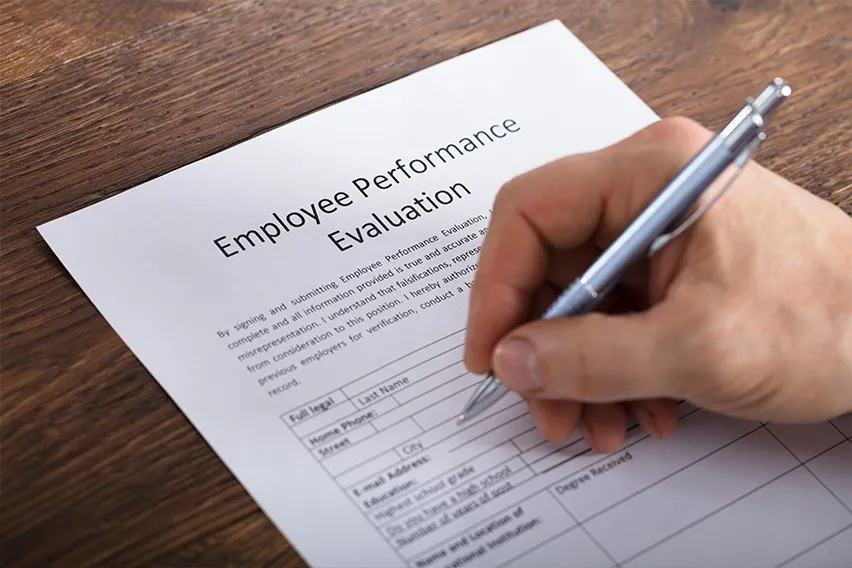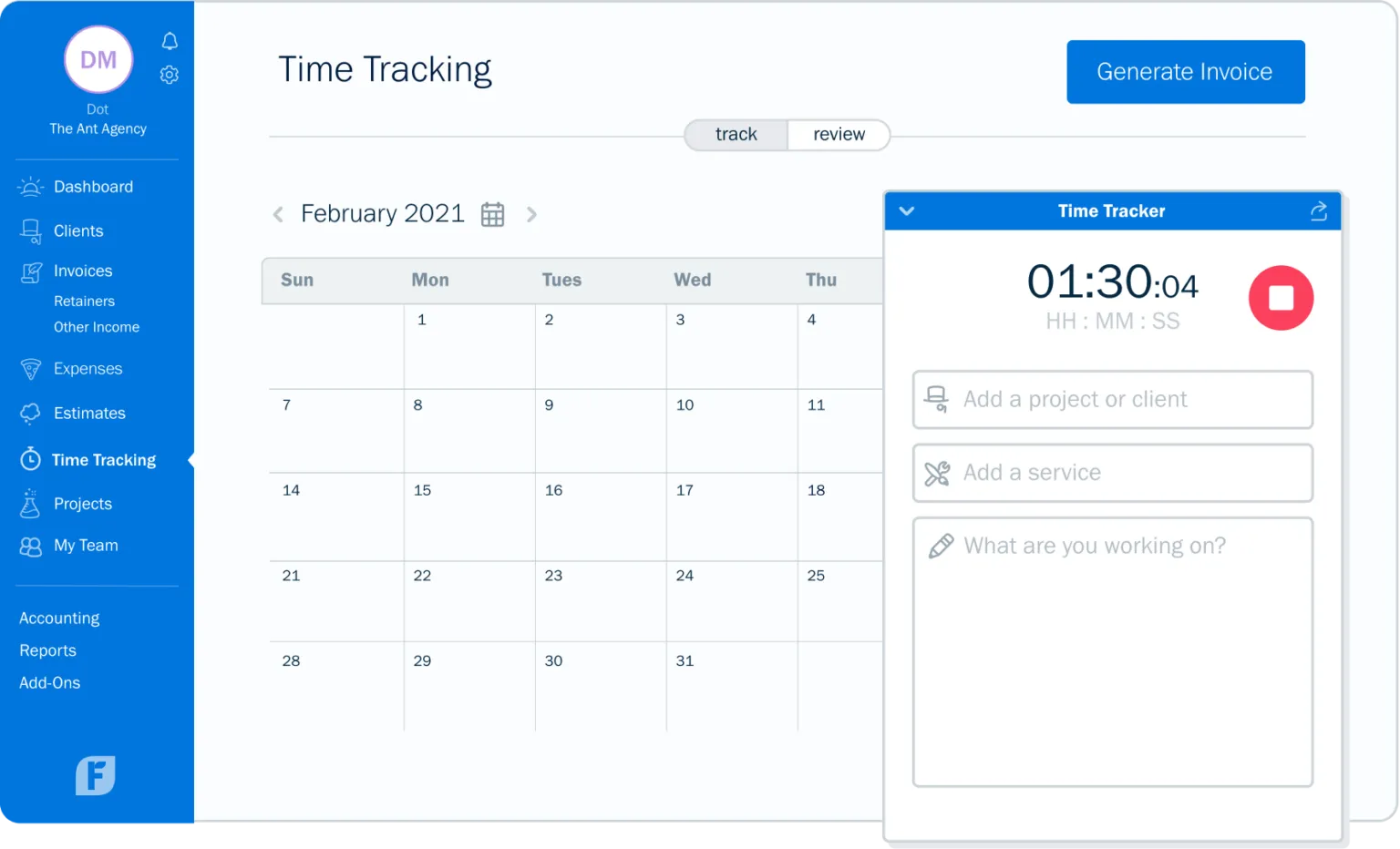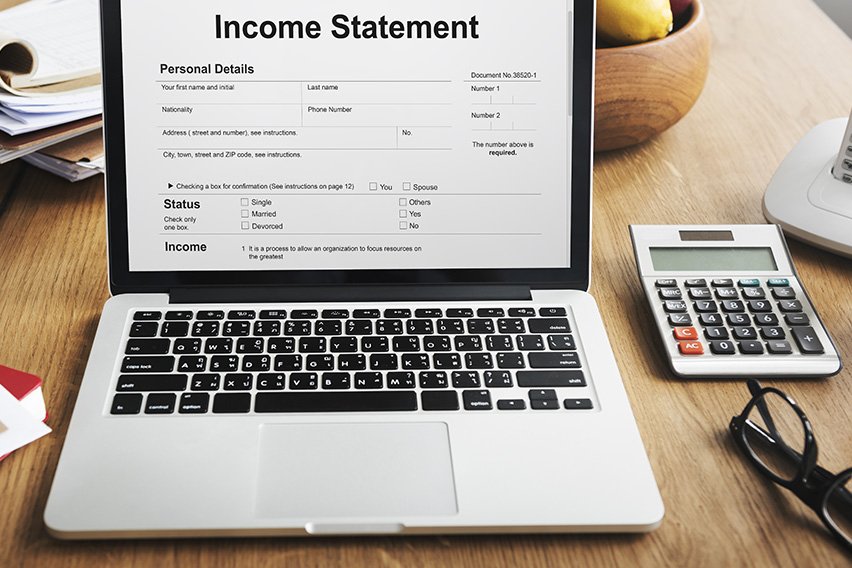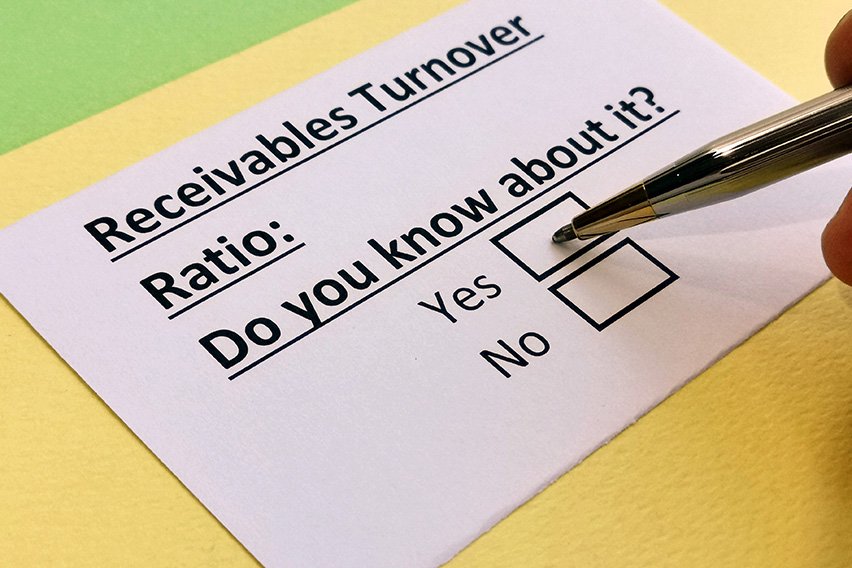How to Evaluate an Employee: A Performance Review Checklist

Most businesses conduct employee evaluations regularly, usually at least once a year. The job performance evaluation typically includes reviewing how employees’ work duties and habits compare with company expectations. Often, the employee performance evaluation results are a vital consideration for promotions, bonuses, and raises.
Regular evaluations help workers do assigned tasks more efficiently, understand what’s expected of them, improve communication between management and employees, and give employees proper recognition for their work. Learn how to evaluate employee performance and measure employee performance so your team can function at their best.
Key Takeaways
These topics explain how to conduct an employee performance evaluation and the important factors of why employee performance evaluations are helpful leadership tools:
- Employee performance reviews are scheduled formal meetings that provide assessments of work performance, typically held annually, with regular check-ins throughout the year.
- Employers can use these meetings to set clear expectations and measure employee success in their role.
- The performance review process helps improve employee performance and productivity while offering support and additional training to those who need it.
- Reviews also allow employers to open a line of communication with their team members to assess their satisfaction and engagement.
- Utilizing standard metrics (like performance review templates) is helpful for objectivity during reviews, especially when evaluating their eligibility for promotions, raises, and layoffs.
What we’ll cover:
What is a Performance Evaluation?
Factors to Consider During a Performance Evaluation
Evaluating Employee Performance
Benefits of Tracking Employee Performance
What’s the Purpose of Employee Evaluation?
What Is a Performance Evaluation?
This is a regular assessment and review of an employee’s performance on the job. Managers typically conduct a complete performance evaluation annually, with periodic check-ins throughout the year.
Performance evaluations allow an employer to set clear expectations, evaluate employee performance and measure the employee’s success. The information gathered in an overall performance evaluation can help drive decisions about pay raises, promotions, and layoffs.
Often, performance reviews include the manager’s evaluation of the employee’s overall performance and a self-evaluation conducted by the employee about their own evaluation of their success. A proper assessment is judged against specific goals using clearly defined metrics.

Factors to Consider During a Performance Evaluation
1. Job knowledge and skills
How well does your employee know their position? Do they demonstrate all necessary skills at a level that meets your expectations?
2. Quality of work
Check over the work done in a specific period of time and evaluate the overall quality by checking for mistakes, ensuring it was thoroughly thought through, and considering feedback from clients and other team members.
3. Quantity of work
Are they keeping up with the expected work pace for their position? You can compare their workload and production to others in similar roles for their evaluation.
4. Communication skills
Is your employee effective at sharing knowledge, asking questions, and taking direction? Do they convey their thoughts clearly while speaking and in writing? Do they display a professional and positive attitude and work well in a team setting?
5. Initiative and problem-solving skills
Does the employee identify and solve issues as they arise, or do they need to be told? How do they handle problems that occur in their work? Are they comfortable delegating or asking for help when needed?
6. Attendance and punctuality
Are they on time and ready to work when expected? Do they call out often, and if so, do they have appropriate reasons for doing so?
7. Performance against goals
Do they meet the goals set out for them by their supervisors or managers? Do they set and meet their own professional goals?
Suppose you’re unsure where to start with an evaluation. In that case, consider implementing the usage of the software that tracks time and project management so that you can keep easy tabs on employee productivity. FreshBooks is a cloud-based accounting software that offers time-tracking tools, project management services, and more, increasing the efficiency and accuracy of tracking employee achievements. Sign up for a free trial here.

Evaluating Employee Performance
Companies need a standard evaluation framework in place to evaluate the performance of an employee effectively and review each employee against those standard performance metrics. Here’s a step-by-step guide to effectively evaluating employees:
1. Set Performance Standards
It’s important to set clear performance standards that outline what an employee in a specific role is expected to accomplish and how the work should be done. The same standards must apply to an employee’s performance for every employee in the same position. All standards should be achievable and relate directly to the person’s job description.
2. Set Specific Goals
You should also set specific goals for each employee, unlike performance standards, which can apply to multiple workers. Goals are particular to the strengths and weaknesses of the individual employee and can help them improve their skills or learn new ones.
Working to achieve career goals and overcome challenges will help workers to feel more engaged with their job while providing higher job satisfaction and better productivity. Work with each employee to set goals that are reasonable and relevant to their position to set them up for success.
3. Take Notes Throughout the Year
Track the performance of your employees and create a performance file for each worker. Keep records of notable accomplishments or incidents, whether positive or negative. Remember that you can give immediate feedback to employees when something stands out as well, you don’t have to wait until the year-end performance review process to give praise or constructive criticism.
4. Be Prepared
When it comes time to give an employee evaluation, it’s best to prepare for the meeting beforehand. Review your documentation for the employee before the meeting and note what you want to discuss with the employee.
The performance review should be mostly about the positive elements of the employee’s performance, with helpful advice on future improvement. After all, if the worker’s last performance review was mostly negative, they probably wouldn’t still be working for you.
5. Be Honest and Specific with Criticism
When you do need to give criticism in an evaluation, be honest and straightforward when giving feedback. Don’t try to sugarcoat or downplay the situation, which can confuse the employee. Give clear examples and then provide helpful, specific advice on how the employee can grow and improve employee performance in the future.
6. Don’t Compare Employees
The purpose of an employee evaluation is to review the performance of each staff member against a set of standard performance metrics. It’s not helpful to compare one employee’s performance to another employee’s performance, and doing so can lead to unhealthy competition and resentment. Always circle back to your evaluation framework to evaluate one employee’s performance, not the performance of other workers.
Utilizing employee performance evaluations and review templates can keep things on equal footing, as you will ask the same questions and analyze the same metrics between both employees.
7. Evaluate the Performance, Not the Personality
Your evaluation should focus on how well the employee performs their job rather than their personality traits. When you judge the employee’s personality, they can feel attacked, and the conversation can turn hostile.
For example, rather than providing feedback about an employee being immature or emotional, it’s more productive to give specific examples of the employee’s actions in the workplace that demonstrate those characteristics. Don’t take criticism personally; always tie it back to work.
8. Have a Conversation
An employee evaluation shouldn’t be a one-way street where the manager gives constructive feedback and the employee listens without responding. Instead, a productive employee evaluation should be a conversation between the two of you. Listen to your employees’ concerns and how they’d like their careers to grow. Find out how you and the larger team can help employees meet their career goals.
You may also ask employees to self-evaluate how they think they performed at their job for the year. A performance review should allow employees to review the workplace, their managers, and themselves and reflect on their career growth.
9. Ask Specific Questions
To foster productive conversations with employees during the evaluation period, it can help to enter the room with specific questions you’d like to discuss with the worker. Here are some questions you can ask workers to spark conversation and receive valuable information:
- What do you hope to achieve within the company this year?
- What resources or support do you need from the department to reach your goals?
- What will your biggest challenges be in meeting your business goals this year?
- How often would you like to receive feedback?
- How can I be a better manager to you?
- What do you enjoy about your work?
- What work or personal goals have you recently achieved?
- Is there an experience or action you are most proud of since our last review?
- What are your long-term career goals, and how can the organization help you achieve them?
- What new skills would you like to develop this year? Is there training we can provide to help develop those skills?
- What brings you joy in the work you do?
- What project or goals are you interested in working on in the future?
Asking questions will allow your staff to express their feelings, concerns, and opinions without fear and make them feel heard.
10. Give Ongoing Feedback
Ideally, employee evaluation is an ongoing process, not a one-time task. Offer constructive feedback regularly and touch base with a worker to see how they’re working toward their yearly goals to help improve worker morale and keep employees on track while improving work quality. Opening up communication between yourself and your team will improve the company’s culture and make staff more willing to come to you if any issues arise before they become big problems.
Benefits of Tracking Employee Performance
Benefits of tracking employee performance include:
- Staying up-to-date and on the same page with your team members.
- You have the opportunity to identify future leaders and reward good work.
- You will gain important information that allows you to set reasonable targets, which can improve morale and reduce turnover.
- You will find out about processes that may hinder your business’s productivity.
- You may find opportunities to provide further training and support to team members.
- Knowing they are tracked may help employees stay focused, improving their efficiency.
- Employee reviews let you speak one-on-one with each team member to receive feedback on their role and expectations.
- Reviews allow you to ensure each employee understands your expectations of them.
- Effective reviews can foster a collaborative work environment.
What’s the Purpose of Employee Evaluation?
When you evaluate your employee’s performance, you receive valuable insight into the company’s culture while helping your staff better understand what is expected of them. It can provide helpful advice and constructive criticism to team members, providing guidance and support to improve their performance in the future.
It will also help you assess each employee’s strengths and motivations while helping you plan for their future at your company. Utilizing standard metrics is useful for objectivity during performance reviews, especially when evaluating their eligibility for promotions, raises, and bonuses.

Conclusion
The evaluation process is based on specific criteria, like their job description. A manager will review employees’ work, productivity, accomplishments, and skills and determine whether they meet expectations. High performers should receive acknowledgment or rewards, while those failing to meet expectations should be re-trained or supported to do their job.
Although it can be an uncomfortable meeting, evaluating your employee’s performance is important as it keeps you updated on everything in your company while identifying top performers and those that need improvement. It can improve worker productivity and create a better company culture by opening up new lines of communication for a more collaborative workplace. Tracking performance also creates a mutual understanding. Everyone involved will be up to date on company and employee goals, which will motivate employees, improve the business’s overall productivity, and ensure all projects get finished on time.
FAQs on Employee Job Performance Evaluations
What is the best evaluation model?
The 360-degree model is the best job evaluation model. Constructive feedback about the employee is gathered by the people who interact with them in various capacities, including managers, subordinates, peers, and clients, usually taken by a questionnaire. The worker is also invited to provide their view of their role for a well-rounded overview self-evaluation of the employee.
What are examples of performance criteria?
Some performance criteria examples include quality of work, execution and organization, progress and growth, resiliency, communication, job knowledge, teamwork, and problem-solving. For the best results, try to avoid negative feedback while instead focusing on their future potential.
Why is it important to track employee performance?
This type of tracking is crucial to keeping workers engaged, productive, and on track. It also gives managers essential insights into each employee’s potential, successes, and the places they may need additional support. Employees will respond to fair assessments and will feel supported and listened to.
How do you tell an employee they need to improve?
Schedule an informal private chat and ask them what they think they could improve upon or where they may need help, and then explain what metrics they are missing while staying positive, focusing on their potential for growth. Offer support through retraining, and schedule a follow-up to keep them accountable and motivated.
What are the 5 areas of improvement?
The top five areas for improvement in job performance are:
- Time management – using time effectively and productively
- Delegation – knowing how to prioritize tasks and how to distribute work appropriately
- Organization – the ability to keep things on track without missing or forgetting anything
- Communication – being able to define goals, express concerns, and give instructions clearly
- Engagement – enthusiasm and involvement in work projects
About the author
Kristen Slavin is a CPA with 16 years of experience, specializing in accounting, bookkeeping, and tax services for small businesses. A member of the CPA Association of BC, she also holds a Master’s Degree in Business Administration from Simon Fraser University. In her spare time, Kristen enjoys camping, hiking, and road tripping with her husband and two children. In 2022 Kristen founded K10 Accounting. The firm offers bookkeeping and accounting services for business and personal needs, as well as ERP consulting and audit assistance.
RELATED ARTICLES


 How to Find Investors? 8 Best Ways for Startups and Businesses
How to Find Investors? 8 Best Ways for Startups and Businesses What Is an Income Statement?
What Is an Income Statement? How to Calculate Accounts Receivable Turnover
How to Calculate Accounts Receivable Turnover What Are Fixed Assets? A Simple Primer for Small Businesses
What Are Fixed Assets? A Simple Primer for Small Businesses Is Service Revenue an Asset? Breaking down the Income Statement
Is Service Revenue an Asset? Breaking down the Income Statement